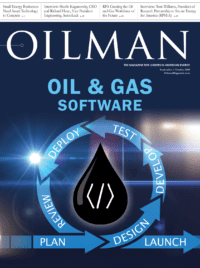Since their first introduction in the late 19th century, oil and gas pipelines have gone on to become the primary transportation system for extraordinary quantities of energy products to various consumers in numerous industries. The United States alone consists of 2.6 million miles of oil and gas pipelines – all tasked with supplying approximately 65 percent of the total energy consumed. According to data from the U.S. Energy Information Administration, of this, oil accounts for 40 percent of consumed energy, while natural gas provides the other 25 percent.
Although pipelines are generally considered to be the safest way to transport fuel (over 70 times safer than tanker trucks and freight trains), like any other engineering structure, they are susceptible to several types of failure. And when they do fail, the outcome is often catastrophic. Fires, explosions and spills caused by pipeline failures can lead to human casualties, environmental pollution, and significant economic losses. According to statistics from the Pipeline & Hazardous Materials Safety Administration (PHMSA), between 1998 and 2017, there have been a total of over 11,700 oil and gas pipeline failure incidents resulting in 1,293 injuries and 331 fatalities at an overall cost of approximately $US 7.3 billion. These incidents have brought pipeline safety to the forefront of international attention and highlight the importance of pipeline failure prevention and mitigation measures.
The causes of pipeline failures are varied and are dependent not only on their design and operation but also their maintenance and management. Statistical data compiled from almost 700 oil and gas pipelines from 2004 to 2015 attribute the most common causes of failure to corrosion, excavation damage, pipe/weld material failure and equipment failure.
Pipeline Corrosion
Corrosion is, by far, the leading cause of pipeline leaks and ruptures in the oil and gas industry – accounting for 25 percent of failures in oil pipelines and 18 percent of failures in natural gas pipelines. According to studies conducted by NACE (National Association of Corrosion Engineers), the cost of corrosion damage can range anywhere between $US 471 to $US 875 million per year. This figure is expected to increase as pipelines continue to age. It is estimated that over 60 percent of oil and gas pipelines in the U.S. are over 40 years old.
Internal pipeline corrosion is typically caused by the presence of carbon dioxide (CO2), hydrogen sulfide (H2S) and free water in oil and gas products, whereas external corrosion occurs due to the reaction between the surrounding environment (soil, air or water) and the metal pipe. These substances react with the pipe material, causing the metal to deteriorate and gradually reduce in thickness. The subsequent weakening of the pipe’s walls can result in leaks or ruptures due to the internal pressures and stresses acting on the pipeline.
Corrosion is commonly characterized by pitting, uniform corrosion or stress corrosion cracking on the surface of the pipe.
Excavation Damage
Excavation damage presents one of the most significant challenges to pipeline safety. This type of damage is usually accidental and is caused by the impact of construction equipment on the pipeline under consideration. Excavation may be in the form of digging, trenching, grading or boring during highway maintenance, home or building construction, or farming activities. According to PHMSA statistics, excavation damage accounts for 15 percent of failures in oil pipelines and 22 percent in natural gas pipelines.
Accidental damage due to excavation may be observed as dents, scrapes, punctures, cuts or protective coating removal. While direct contact between the excavation equipment and the pipeline can cause sudden and catastrophic failure, scratches and dents can remove protective coatings and eventually lead to failure in the short to medium term. Coating damage can promote accelerated corrosion, which in combination with physical damage can increase the potential for leaks.
Pipe or Weld Material Failures
Pipe welds and other types of joints are usually weaker relative to the rest of the pipe structure. Moreover, earlier methods of welded longitudinal seams on some pipes are known to have been inferior in quality and more susceptible to failure. Although modern welding techniques have dramatically improved, weld failure continues to be a cause for concern.
Additionally, some of the older pipes – joined with substandard welding – are still in use today. Weld failures usually manifest as cracks at the welded joint and can be caused by:
- Improper welding techniques
- Improper welding inspection
- Presence of impurities in the welded steel
- Welding of contaminated surfaces
- Adverse reaction between the weld puddle and the surrounding environment.
Failure may also originate from defects in the piping material itself. Impurities can become trapped in the molten steel during the manufacturing process, resulting in weaknesses in the metal’s crystalline structure. Although unwanted impurities during steel production were more prevalent in earlier manufacturing processes, defects in modern steel materials still account for a small percentage of pipeline failures. Material failure may come in the form of laminations and inclusions, or blisters and scabs.
Based on the statistical sample data, material/weld failure is responsible for 22 percent of oil pipeline failures and 24 percent of gas pipeline failures.
Equipment Failure
Equipment failure is used to refer to any failure caused by a pipeline component or device other than the pipe itself. These include pumps, compressors, valves, meters, tanks or any other component essential for safe operation of the oil and gas transportation system. Equipment failure typically results in the release of hazardous fluids into the environment, usually in small quantities. Since oil and gas equipment is generally located on company property and subject to limited access, these releases seldom result in injury to the general public.
Equipment failure can be caused by improper usage, lack of maintenance or improper component selection for the given application. Seventeen percent of oil and 11 percent of
natural gas pipeline failures are brought on by faulty equipment.
Conclusion
Overall, these four types of failures account for over 75 percent of pipeline leaks and ruptures in the oil and gas industry. Incorrect operating procedures, natural forces and other external forces acting on the pipeline account for the other 25 percent.
The devastation caused by oil and gas pipeline failure underscores the importance of safety and reliability in these systems. The data from failure events collected by PHMSA and other departments worldwide are, however, useful in understanding the weaknesses that occur in pipeline management, and are necessary for continued risk identification, mitigation and prevention.
Corrosionpedia aims to provide the first steps in the research journey for asset integrity professionals the world over.
Corrosionpedia aims to provide the first steps in the research journey for asset integrity professionals the world over.









